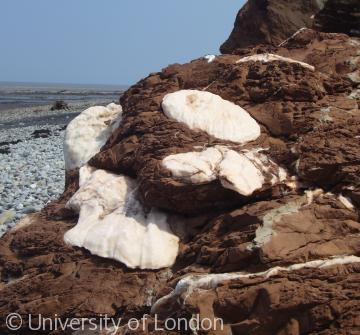Watchet Alabaster

Walking, carefully, on the beach below the cliffs from Watchet's West Beach to Blue Anchor you can see huge falls of rock in which shine bright fragments of white, salmon pink and black rock. That is Watchet alabaster, a very fine-grained gypsum still prized by sculptors. In the 17th century it was sought after as a substitute for marble to build monuments and church fittings and large quantities must have been shipped from Somerset, possibly helping to destroy the cliffs that now face a losing battle with the sea and the rain that saturates the mudstone of which they are largely formed. By the 19th century only smaller blocks were available but it was still used to decorate fire surrounds as well as being ground for gypsum plaster.
Content derived from research undertaken as part of the Victoria County History project


